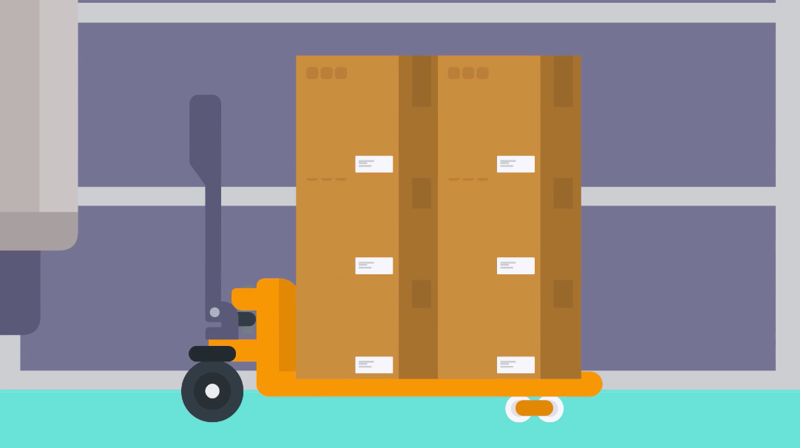Today, there is a movement toward shopping locally, and it’s a great way to boost regional economies and help small businesses. However, once consumers use their PCs, tablets, and phones to shop, the location of the retailer and product becomes far less important. In fact, studies show that 40 percent of online shoppers are willing to buy from merchants in other countries, and merchants are extending omnichannel shipping strategies to ship directly to consumers from offshore supplier inventories—a phenomenon called the “endless aisle.”
This has led to a logistical maze for many shippers to make their way through as they look to deliver items to shoppers around the globe, while keeping costs in line and customers happy.
What are the biggest concerns in global shipping?
Statista published the results of a survey that indicated that 51 percent of respondents identified navigating customs compliance as the biggest global eCommerce challenge, followed by cross-border tracking at 46 percent, and managing delivery expectations at 43 percent.
With an increase in eCommerce demand, global parcel shipping grew 17 percent a year ago, to 74.4 billion parcels. China’s volume increased 28 percent to 40 billion parcels. In fact, Forrester estimates that cross-border shopping will make up 20 percent of eCommerce in 2022, with sales reaching $627 billion.
Surprisingly, though, many shippers are still sending these hundreds and thousands of packages one at a time, slowing the process and incurring extra costs.
To combat this, shippers are incorporating a cross-border consolidation strategy at a quickening pace, and software providers are helping them accomplish this. This means that retailers can now ship from inventory sources anywhere in the world, to anywhere in the world by making use of integrated “cargo chains” that manage first-mile pickup, labeling at origins, consolidation, cross-border customs clearance, deconsolidation, and injection into last-mile parcel networks.
As more packages travel internationally, cross-border consolidation is playing a larger part in shipping. By palletizing multiple packages, the consolidated shipment is delivered to the destination country and then injected into that country’s shipping stream until each package reaches its destination. This helps to cut down on customs delays, costs, damage, and headaches. Of course, to manage even this type of system does require the right systems as managing a multitude of carriers across the globe does not come without difficulties.
Who’s doing what
Here is a brief rundown of some of the available cross-border and global supply chain options for shippers:
- Borderfree from Pitney Bowes powers the international experience for more than 300 online stores and enables global shipping to over 220 countries and territories around the world.
- FedEx International Priority Direct Distribution (IPD) and FedEx International Direct Distribution consolidate multiple packages into pallets, allowing them to clear customs as a single entry, then be distributed and delivered to multiple addresses.
- UPS TradeDirect: Whether air, ocean, or truck, this service consolidates multiple packages into pallets, allowing them to clear customs as a single entry, then be distributed and delivered to multiple addresses.
- SEKO Logistics offers a Global Trade Management tool with instant access to all current regulations, for any combination of countries that a company may ship from and to. It also provides all of the relevant forms and documents for that particular shipment, at the same time.
- Pierbridge: As part of the Wisetech Global group, Pierbridge’s Transtream multi-carrier TMS fits seamlessly into the global supply chain by supporting cross-border consolidated drop shipping for multiple carriers. For example, Transtream simplifies shipping to and from Canada by creating final-mile parcel labels at the time of shipment processing and consolidating those shipments on a container for cross-border movement and drop shipping into the local carrier network. This streamlines customs clearance while speeding delivery.
No longer is shopping or shipping limited by borders. Today’s retailers and pure-play eCommerce companies need to have the right tools and partners to handle the complexities of cross-border consolidation.
